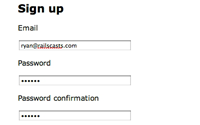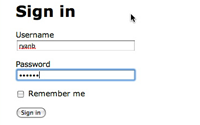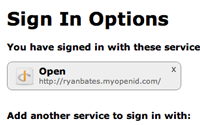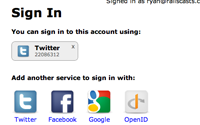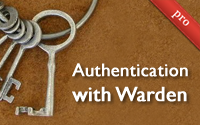Categories
- Active Record
- Active Resource
- Active Support
- Administration
- Ajax
- APIs
- Authentication
- Authorization
- Background Jobs
- Caching
- Code Walkthrough
- Controllers
- Debugging
- Deployment
- eCommerce
- Forms
- Mailing
- Models
- Performance
- Plugins
- Production
- Rack
- Rails 2.0
- Rails 2.1
- Rails 2.2
- Rails 2.3
- Rails 3.0
- Rails 3.1
- Rails 3.2
- Rails 4.0
- Refactoring
- Routing
- Search
- Security
- Testing
- Tools
- Views
Applied Filters:
devise x
Devise and OmniAuth (revised)
In this episode I build upon a standard Devise setup and show how to add 3rd party authentication using OmniAuth. This includes support for user validations and is compatible with normal password authentication.
(10 minutes)
Devise (revised)
Devise is one of the most popular authentication plugins for Rails. Here I show how to set it up with a User model and configure the modules, views, routes, and more.
(8 minutes)
Introducing Devise
Devise is a full-featured authentication solution which handles all of the controller logic and form views for you. Learn how to set it up in this episode.
(10 minutes)
Customizing Devise
Here we dive deeper into Devise by customizing how the views, routing, validations, and authentication works.
(7 minutes)
Engage with Devise
Janrain Engage (aka RPX) makes it easy to support many authentication solutions through their one service.
(6 minutes)
Exploring RubyGems
RubyGems can make it easy to add a feature to a Rails application, but it can also cause headaches down the road. Here I give some tips on researching gems to decide which one to choose, or when to do it from scratch.
(7 minutes)
OmniAuth Part 2
In this episode we continue our look at integrating OmniAuth with devise. Here I show how to set up new users with validations.
(15 minutes)
OmniAuth Part 1
OmniAuth is an easy way to add many different authentication services to your app. In this episode we start integrating it with Devise.
(10 minutes)
Authentication with Warden
Warden makes it easy to move authentication up into Rack middleware. This means authentication can be accessed outside of a Rails controller such as in routes or in a mountable engine.
(12 minutes)



